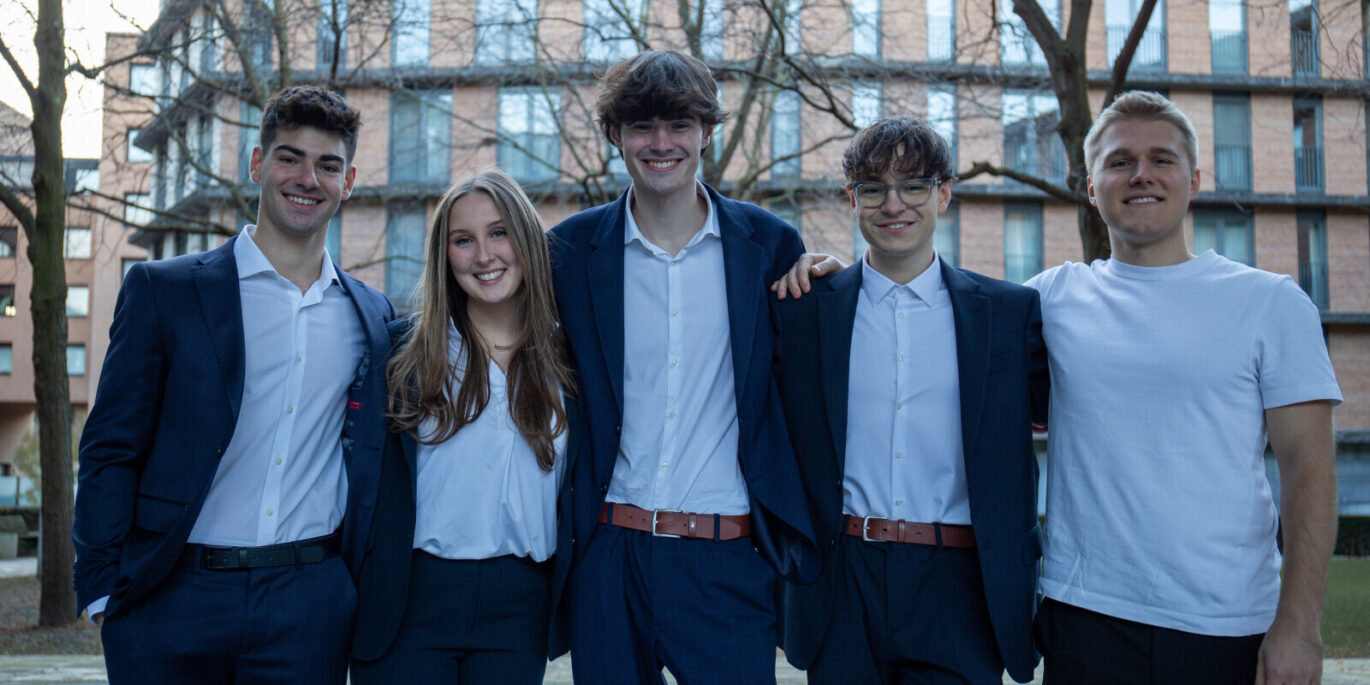Neurodivergence covers a range of conditions causing differences in how an individual processes information.
The most commonly discussed are Attention Deficit Hyperactivity Disorder (ADHD) and Autism, however the term also includes Dyslexia, Tourette’s and Post Traumatic Stress Disorder (PTSD).
Most universities are seeing an increase in students with these conditions attending their institutions. Whether this is due to an increase in awareness and diagnosis, or through increasing accessibility provision and the work of widening participation teams, the reality is the students are here, now.
The effects of the pandemic on education cannot be denied. The remote learning methods required by schools allowed many students to find the best way to work for them, and ultimately be incredibly successful.
But it also deprived students of interpersonal interaction. This prevented current students, who were 14 years old when the pandemic began, from building social etiquette that we would normally expect freshers to possess when entering universities.
The policy problem
Universities and SUs often fall into the pitfall of designing policies that are poorly understood and supposedly applied to all.
But they simply can’t be applied to the diverse student bodies present in our universities in 2024. While social and physical differences are often considered as part of the writing process, sensory and information processing differences are often left out.
Policies are often written for and designed around “average (neurotypical) students”, something we know, as SU staff, simply doesn’t exist.
Documents are often long, complex and rely on yet more documents to be read and understood. For example, typical student disciplinary procedures almost always refer students to reading student codes of conduct.
“Average” (I know, but bear with me) young undergraduate students engaging with their first student leadership role do not have the patience, or free time, to read through pages of size 11 Calibri bureaucracy.
What students want is an easily accessible, quick-fire explanation of the information they need. They can then engage at a deeper level if needed.
Creating accessible and simple outlines of expectations, rules and outcomes is essential for building a system that works for neurodivergent students.
While creating the detailed clarifying documents to satisfy governance processes is necessary, the majority of students will never need to know most of the content.
What is often missed in these documents is understanding of how to apply rules surrounding expected behaviours to students who may not understand that their behaviour is unwanted or upsetting to others.
Sounding the alarm (bells)
I have been in student society disciplinary meetings where alarm bells go off when the student is telling me about the behaviour that they have found challenging, harmful or upsetting.
Almost immediately I begin questioning whether the student(s) they are complaining about are neurodivergent, or that student is neurodivergent themselves. Often these complaints come down to neurodivergent individuals not understanding when other students are wanting to terminate a conversation, that their intense or lack of eye contact has been interpreted as problematic, or that directly communicating without social niceties is interpreted as being rude or aggressive.
How do SUs navigate conversations with student leaders around this when neurodivergence has not been disclosed, and we have not been given permission by the student to make that disclosure?
The disciplinary dilemma
Disciplinary procedures are always an incredibly delicate reviewing process. We must trust the victim that the issue has occurred, while also working on the legal principle that someone is innocent until proven guilty.
For SUs there is also the added challenge of identifying what comes under SU disciplinary processes, and what should be escalated to the university to sit under their procedures and processes.
Sometimes these disciplinaries can involve reports from multiple students, external service providers and university stakeholders, all of whom want different outcomes and timelines. So how do we appropriately consider neurodivergent student needs as part of this situation to untangle?
A life of discrimination
Throughout their childhood, many neurodivergent people are penalised for their behaviour, particularly where this does not fit into social norms.
This means they enter higher education with expectations built on years of bad experiences with formal education. When dealing with both neurodivergent and neurotypical students, it’s important to avoid language such as labelling a behaviour as “bad” or “wrong”.
The right approach is to instead identify how the behaviour was interpreted (and why if possible), what the impact of that behaviour was, and how the student can better communicate their intentions in future interactions. This applies to both parties.
I have had many conversations along the lines of “did you directly tell them you wanted them to stop talking about this? No. Maybe try that?”
Providing training for student leaders on how to create an inclusive community, and how to include neurodivergence in this, is also important. This year in our SU team we have designed accessibility training, including a section on neurodivergence. It was incredibly well received by society committees, student reps and other student leaders. We shouldn’t just be “fixing” neurodivergent students – the whole student community needs the tools to understand.
Creating focus groups and/or student networks is also a good step. Gaining students perspectives can create unique insight into the experiences of neurodivergence at a university. Student advisory panels I have been involved with in recent years have given insight into areas of the student experience I have never previously considered, and have provided some of the most creative and simple solutions to complex issues.
And the creation of clear student facing processes is a must. Unfortunately it’s inevitable that with all the training and understanding in the world you are still going to get inter-student complaints, whether they’re based around a student’s neurodiversity or not.
Students can be best supported through this with a clear and concise document outlining the processes, that should ideally include likely timelines, what they can and can’t do within this time, and possible outcomes. And making sure they know who they can talk to is important too.
Once all of that is done – it’s worth remembering that that may be a lot easier inside the SU than in the university. Students face conduct cases outside of our contexts too, and the stakes are often higher there – so lobbying for change in the university’s processes too is an important component of what can be done to improve things for everyone.
Making higher education better for everyone
While neurodivergence isn’t new, the impact on social skills due to restrictions on interaction throughout Covid is. With more and more people getting a neurodivergent diagnosis, some of us later than others, we need to be building processes and communication formats for the future.
As with almost all accessibility projects, improving access for one group of students has the benefit of simplifying the life of others unintentionally.
Clarity on expected behaviours for members, simple explanation of disciplinary processes, and how these are practically implemented, can only help to build healthy, safe and rewarding opportunities for our student leaders to develop their confidence.
They may learn more about how their own brain works through understanding others. This will help build strong, equitable leaders of the future.


















